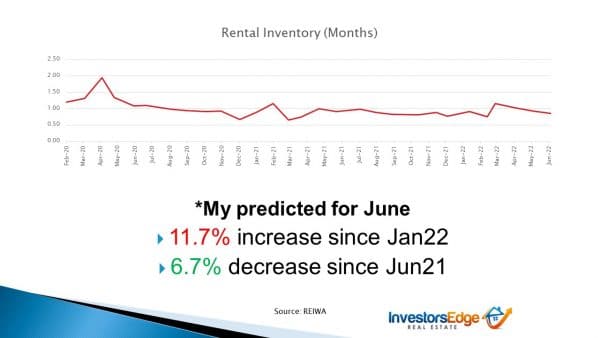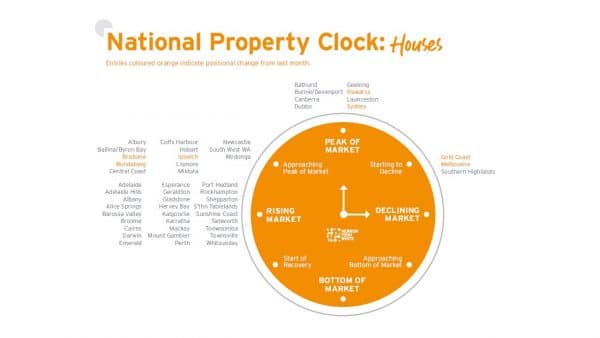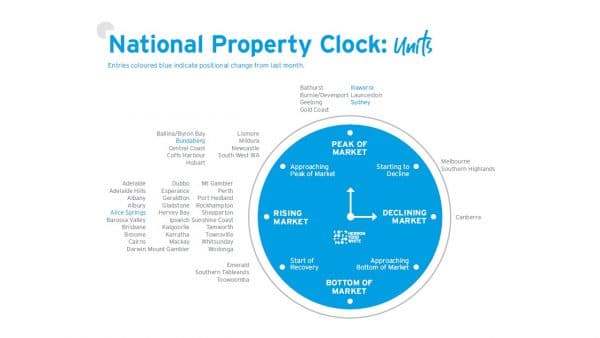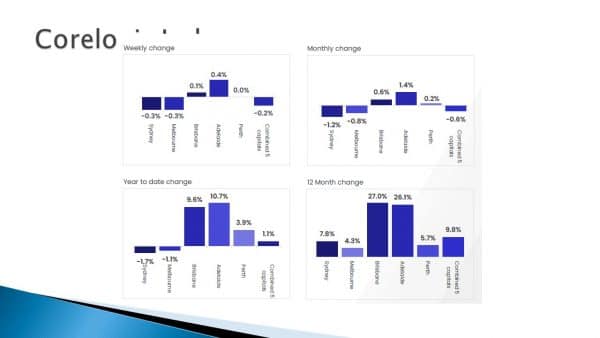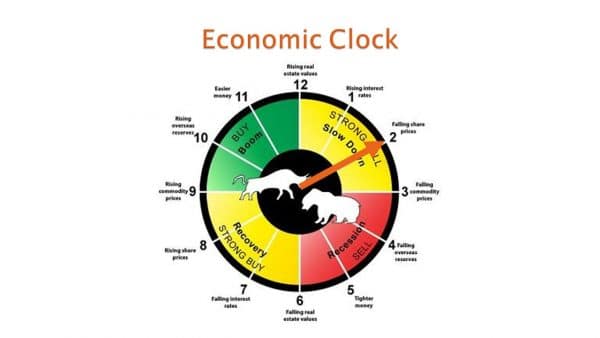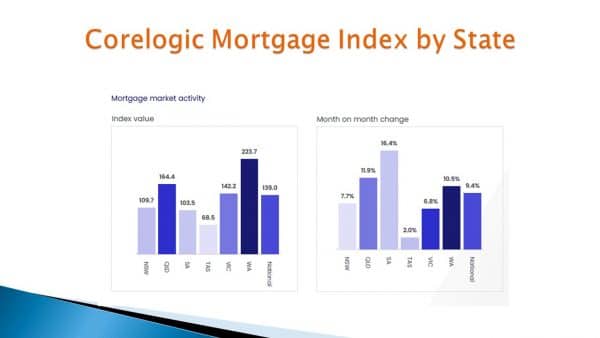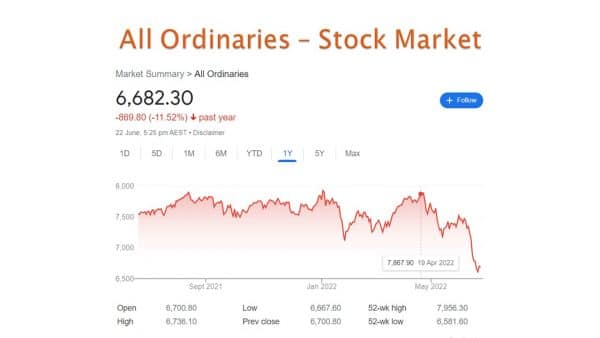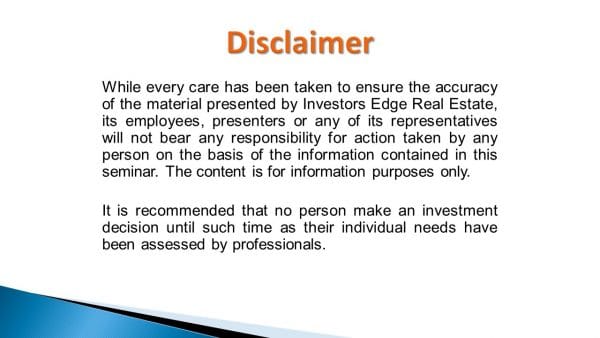Listen and Subscribe:
Omny | iTunes | Google Podcasts | Spotify
In today’s episode, I’m bringing you my quarterly Perth Property market update and with so many changes there is a lot to fill you in on!
Boy I love doing these and have a lot to cover for you on the sale market, the rental market, what I’m seeing with the factors affecting our market, and my crystal ball for what’s ahead.
I’m calling this episode “Opportunity Strikes” because it is a great time to be looking to buy in Perth when there’s a bit of noise and a bit of softness from interest rates increasing.
We’ve got lots of exciting information to cover today, so let’s go inside!
Episode Highlights:
- Introduction [00:00]
- Properties For Sale [01:46]
- Properties Sold [02:42]
- Monthly Sale Inventory [03;39]
- Perth House Sales and Median Price [04:19]
- Perth Unit Sales and Median Price [05:27]
- Perth Land Sales and Median Price [06:37]
- Perth Listings and Median Selling Days [07:17]
- Perth Rental Market [07:53]
- Rental Vacancy Rate [08:46]
- Median House Rent [09:22]
- Monthly Rental Inventory [10:14]
- Property Clock Timing [10:30]
- National Property Clock: Houses [10:30]
- National Property Clock: Units [11:38]
- CoreLogic Index [12:05]
- Factors Affecting Our Market [13:11]
- Economic Clock [13:36]
- Finance [15:09]
- Inflation [17:29]
- Australian Securities Exchange [19:03]
- Corelogic Mortgage Index by State [19:36]
- Homeowner Lending by State [20:31]
- FHB Lending By State [21:30]
- All Ordinaries – Stock Market [21:59]
- Unemployment Rate [23:06]
- Economic Forecasts for WA [24:24]
- Tips to Survive and Thrive [25:44]
- Actions to Consider [26:20]
- My Crystal Ball [28:27]
- Further Help [30:48]
- Outro [31:29]
See Transcription & Graphs Here:
Let’s jump into things, shall we? I’ve titled today’s market update “Opportunity Strikes”, because boy, there’s a lot of noise in the media at the moment about rising interest rates and inflation and decreasing stock markets worldwide. There’s a lot of uncertainty but in that uncertainty, Perth is a shining light of really strong fundamentals. And that’s going to represent some really great opportunities for us investors if we can buy the right properties moving forward over the next three to six months and be positioned for what I believe to be the growth ahead. Let me take you through all the stats, all the numbers right now, and I can unpack this for you.
Perth Sale Market
Number of Property For Sale
Let’s go into the sale market first. The number of properties for sale has continued to stay very low across the whole of Perth, we’re at just 8,532 properties on market. And if you’re watching the video on YouTube, you can see that we’ve been trending sideways in our supply since around March ’21. That’s a really great sign that the market is still very tight across the whole of Perth in the majority of suburbs.
There are still seeing very few properties for sale and that’s keeping pressure on prices. When a new property hits the market, buyers are waiting and they’re getting in quick in most cases. That’s a very good sign for the overall state of our property market. And you can see that over the last year, that supply has decreased a further 5.3%, so good signs in the number for sale. That’s the supply side.
Number Sold
When we look at the demand side and look at the number of properties being sold week on week, you can see that we’re trending approximately sideways in the number of properties being sold each week too. That’s stabilized at a high level. We’re above 2013 levels still, and a very good sign for the demand that’s still occurring in our market. And it’s slightly down on a year ago, at just 7.7% decrease since June, 2021, nothing to be concerned about as yet but I do expect some softening over the next three to six months, just as we get used to the shock of interest rates and things normalize. I expect to see that will slow down a bit in the number of properties being sold but I also expect people are going to be more choosy on whether they sell. I’m hoping the two will equal out and will maintain the low tightness in our market supply.
Sale Inventory
When we look at our sale inventory that has been trending sideways at an incredibly low level as well, we’re at 2.43 months of supply. And think of the inventory as how much we’ve got in the cupboard, how much supplies in the cupboard given the current rate of purchases buying. There’s 2.43 months worth there. At times, we’ve hit as much as eight or nine months worth of supply.
Very tight overall market and we’ve seen a slight increase since June ’21 with just a 2% increase. Fundamentally very solid on the sale market across Perth still.
Median House Price
Now, when we look at the median house price, that’s always a lagging indicator. That’s why I talked to you about supply and demand first but when we look at the median house price, we’re at 527K. Now boy, that’s low compared to all the other capital cities. We’re really showing how affordable we are and it’s standing out more than ever with the recent jumps to Adelaide and Brisbane. We’ll cover those off in a minute but we’re at $527k. You can see we’ve had a more tapering off of our increases in the overall median.
That’s not to say that certain suburbs aren’t growing a lot more than that. There’s never just one property market, individual suburbs will be performing better than others. And that’s why suburb selection is so important, but that’s good to see that it is still edging up slowly. And the overall volume in house sales slightly decreased in the March quarter. A little bit of steam’s come off, still at a very high level and we don’t have the June quarter stats yet but I expect a slight decrease off in volume as well. And that’s reflective in the number of properties being sold each week that we discussed earlier.
Median Unit Price
Now, the unit sales median house price has flattened a bit, and I’m seeing this in the market too. Units typically have their run on the back of strong migration, and it’s really going to take some time for that demand to flow through to the actual unit market. We’re at $415,000 median, we saw quite a jump in recovery over the last two years. We’ve pulled up around 10%, so not significant but still getting back to on par with the values that we were previously.
Arguably there’s a lot of potential in the unit market but for me, the risks and the volatility and the reliance on migrants means that I try to stay out of especially higher density units. And there’s nothing wrong with those with more of a land component, such as villas and townhouses but they all get lumped together in the one basket. What you’d actually find is the apartment market’s extremely soft, villas and townhouses are holding up the stats and making them look better than they are overall. And so when you say units, most people think apartments but it does include the other two as well.
Median Land Price
Now, the land median house price is sitting at about $251,000. You can see that the volumes have continued to decrease, decrease quarter on quarter. And I expect that median will just hold there because there’s really not much land supply to be setting and there’s really not much demand for land because who wants to build when build prices are skyrocketing, time period to delivery is skyrocketing. And so not much demand on the land side.
If you can get a good block, if you can have a builder that gives you guarantees and you can feel comfortable, then it’s always worth considering but wouldn’t be my first choice to move a development forward now if you had the choice and didn’t have to.
Median Days on Market
Now, with the average median days on market, that has remained super tight at just 16 days on market. And that is showing just how quickly properties are selling. That’s been trending sideways and this isn’t just in the higher end areas or in the family friendly suburbs. This is also in the outer areas are really tight now, too. Even in the Baldivis, Byford and Ellenbrook… the outer areas of the world, I’ve been selling quite a few properties out that way these days and they are selling very fast as well. Good news for those that have wanted to get out of an asset that’s arguably in an inferior location.
Perth Rental Market
 Number for Rent
Number for Rent
When it comes to the Perth rental market, let’s dive into this. My favorite topic is the rental side because we’re so close to it with our property management being across over 200 suburbs, we get a great insight into what’s happening on the properties for rent. That has continued to tighten and we’re at an almost all time record low of number for rent at just 2,298 properties.
That’s the whole time that I’ve been recording it, it’s one of the lowest. You can see that it’s 18.3% down in the supply of properties for rent since June last year. Wow, that’s continued to tighten. And our number for rent across … We’ve got 870 properties under management, we’ve got just 13 properties for rent, so they’re going fast. We’re getting more every time and we’re finding the quality tenants among the many applications that we get.
Rental Vacancy Rate
When it comes to the rental vacancy rates in Perth, that’s drifting sideways and holding. I’m predicting it to be 0.9% for June. That’s going to be slightly up on where we were six months ago at 0.7%, but anything sub 1% is super tight. Anything below 2% is super tight.
Our vacancy rate for our portfolio of that many properties is just 0.15%, so we’re keeping our rentals really tight and keeping the vacancy minimal in turning over our tenants between tenancies. That’s great news for our landlords, getting less vacancy and more rental return.
Median House Rental Price
When it comes to the median house rent, that’s predicted to be $495 per week. We’ve actually surpassed the previous high that we had back in 2013, of $480. We’ve hit a new record high for rent and that’s going to keep going. We’ve had a 10% increase over the last year, and it’s really started increasing month on month again, the vacancy rate’s so tight and it’s going to remain that way.
It’ll likely be rental increases for the foreseeable future over the next year. Our average rent of our portfolio of properties is now $436 a week, so that’s edging up. It takes time for us to chase the median because we have to wait till tenancies come to an end and then we can renew them and keep them in line with market. Still passing on lots of rent increases to our tenants where they’re warranted.
Rental Inventory
Now, the rental inventory has remained very tight. We’re at just around one month of supply, that’s amazing just how tight it is. Yeah, can expect to see pressure remain on rental prices increasing.
Houses Property Clock
Now, our property clock timing, when we look around the other capital cities, we can see that Melbourne gold coast is in the starting to decline phase. Sydney, they’ve moved back to peak of market but really, it’s starting to decline and experiencing negative price growth on the indexes. That’s not to say that there aren’t individual suburbs within any of these areas that are still increasing, but just the capitals as a whole in this phase of the market.
When we look around, Brisbane has now been moved around to approaching peak of market. I’ve just picked up a property there and it was more about my longer term plan to have a property in Brisbane and in Melbourne. I’ve been so focused and concentrated in Perth but Perth for me is the go-to place if you were going to make a purchase.
Now, I did just add a property in Perth a couple of months ago and its still expected to be in a rising market. Our Southwest WA is still indicating as approaching peak of market. I wouldn’t necessarily be buying in the country areas, focus in the capital city of Perth. And if you need to know where to buy, look at getting our buyers pack.
Unit Property Clock
When we look at units, Perth, no change, we’re still in a rising market. It is a lot more gradual than the houses, tends to trail the houses 12 to 18 months as you would’ve heard me mention in previous episodes. And we’ve had Sydney appear to be at peak of market. Melbourne’s still starting to decline. And Brisbane, where is it? They’re in a rising market for units apparently still. Yeah, their unit market’s trailing their housing market by similar amount to what Perth is.
Corelogic Capital City Price Index
Now, CoreLogics index shows … I guess, it can help you give a feel of what’s happening week on week, month on month. And we of course, had Tim Lawless on the podcast last December, hoping to get him back again but I love the data that CoreLogic produce.
We can see that for the week we had a 0% change in the index for Perth. Brisbane and Adelaide were continuing to increase, 0.1% for Brisbane, 0.4% for Adelaide in the week. But it’s more helpful to look at the monthly change. Perth had a edging up of 0.2%, Adelaide 1.4%. Adelaide’s still going strong and what I’ve seen is investor activity has moved and shifted from Brisbane predominantly, to Adelaide. And now, we’re starting to see investors move around to Perth. And I expect Perth’s going to be the go to over the next 6 to 12 months. Year to date change, Perth’s had 3.9% on the index increase so far in the year. Adelaide’s had 10.7%, Brisbane 9.6 and Melbourne and Sydney are showing negatives.
Yeah, that should give you a clearer picture of where Perth sits in the overall states of each of the capitals.
Factors Affecting Our Market
Now, factors affecting our market, and we’re going to take a deep dive into many of the interesting things that are shaping it.
Economic Clock
Now, when we look at our economic clock, we’ve definitely had some changes in the clock over the last three months since I came to you. We were previously sitting at about 12 to 12:30, we’ve now moved around with rising interest rates happening, we’ve got falling share prices. We’re about at two o’clock.
Now, the next parts of this economic clock that we need to look out for is falling commodity prices. I expect with what’s happening in the Ukraine that they and different economies of the world ramping up their war machines. We’re going to have some very strong demand, especially in WA with all of our resources. There’s also the green mining surge, which could lead to our mining boom 2.0. I’m really happy to be in Perth and have a lot of my eggs in this basket.
But as we move around in the economic clock, the other big thing we need to look out for that really would affect things most, is tighter money supply. That is what causes a decrease in the property markets, not rising interest rates as many people expect. Yeah, look for how the reserve bank and APRA might change money supply. It’s not interest rates tightening, it’s restricting of lending.
If investor lending gets out of control coming up, they may put the brakes on and that’s when we’d look and see a potential pullback. Then once we get around as well, keeping our eye on what is ahead, the recovery is signaled by falling interest rates often, and that’s a strong buy and rising share prices. Look, I think cycles appear to be moving quicker than they’ve ever done before. I’m not an economist, so I can’t explain why that’s the case but I wouldn’t be counting on many years to get through the cycle this time. I think it’s going to happen quickly.
Finance
Now, finance. We have to take a deep dive into this because there’s been lots of changes and you would’ve seen all over the news if you do turn on your TVs, the cash rates increase from 0.15% to 0.7 … By 0.75% to 0.85% over the last two months. And it could increase by as much as 2.5% further ahead.
The neutral cash rate is considered to be 2% to 3% historically. And without rates being up at this level, we don’t then have a lever to pull when we hit a crisis. It’s really actually a very good thing for our interest rates to be getting back to that band because if we do hit hard times again, we can decrease and cut rates to stimulate the economy. But if rates are already low, we’ve got nowhere further to cut, do we? Very critical to get back in that 2 to 3% band. And what that means for the average borrower, is the actual rates on offer from the bank are around 3% to 3.5% at the moment.
And looking at what is possible, they’re likely to go to 4.5% to 5% over the next six to nine months. Prepare yourself and expect month on month increases. They may pause for a month but they’re going to keep increasing them until they see hopefully, a decrease in inflation. There’s been an initial shock that I’m seeing out there to buyers still adjusting. I think first time buyers are probably hit the most with their borrowing capacity being affected and them feeling the shock the most.
And the interesting thing that I saw this week, is that CBA are actually predicting rate cuts by the middle to end of next year. As I mentioned earlier, I don’t think this cycle of finance is going to take that long to wash through. I reckon the market’s going to pull back quite heavily as the overall economy it’s going to tighten, and we’re going to be getting rate cuts before we know it. But watch and see what happens
These things are never possible to predict super accurately but we can get a feel for where it’s going as it happens and try to be one step ahead and be prepared for it. There’s a likely recession looming in the US, so we’re going to see a lot of negative news washing out of that. And they’ve been increasing their rates a lot more aggressively because their inflation is a lot more out of control than us.
Inflation
When we look at inflation, and I’ve recorded a really great episode to go and listen to a few episodes back at episode 80 for a deep dive on inflation, what it all means and how to actually make it work hard for you with taking debt as a hedge. And that’s why owning property is so good in higher inflationary times because it actually decreases the relative value of your loans, while increasing the relative value of the asset.
And the CPI, which is the consumer price index, was showing inflation at 5.1% for the March quarter, expecting it to be higher in the coming quarters for the annual year on year changes.
The target for the RBA is to try and get inflation between 2 to 3%, too. We’re well outside that band of what they deem a neutral level. That’s why they’re increasing interest rates, to decrease demand of consumers.
Now unfortunately, the inflation is being driven by the supply chain restrictions mainly. There’s going to be a lot of pain felt to make small changes. And normally, increasing interest rates will reduce demand driven inflation. And so that’s why it’s going to be quite painful for a lot of people to tighten up on things that they don’t really want to tighten up. It’s not going to be frivolous consumer spending that’s tightening, it’s going to have to be a lot of essentials and changing up things that we may not want to. Hang in there everyone, if you’re in that boat. And all of us are seeing those cost increases no matter what means we have behind us and it’s hitting every household. I feel it too.
And when it comes to the ASX 30 day interbank cash rate, this is basically where the futures market is expecting interest rates to go. And they’re predicting a possible further rise of around 3% increase and their yield curve is starting to decrease. And it just gives a feeling for where the market could potentially see interest rates to go.
It could go up by further 3% according to the futures that many investors believe, but that can change quite quickly with the sentiment of the market.
Corelogic Mortgage Index By State
Now, I’ve also taken a look at the CoreLogic mortgage index by state, and this was incredibly interesting because it’s showing already that the mortgage activity for WA is significantly increasing and the index has gone up substantially and is now actually leading the country on its actual activity. That’s a precursor to further demand and tightening of the market, and that’s why I love to look at it. And when we look at the month on month change, we’ve seen a solid increase for WA at 10.5% increase in the index.
South Australia and Queensland led the way, with Perth being third. I think Perth is going to start taking over as the go-to place for migrants. We’ve got a really interesting chat coming up with Anthony, called “Migration Insights” is one of our next episodes so check that out. And we’ve got a lot of investor activity moving here too.
Homeowner Lending By State
When we take a deeper look through what is making up the lending, and this is stats from the Australian bureau of statistics to April, we can see that homeowner lending in WA is trending sideways and holding strong at well above 2013 levels. It’s well above any level in the past still. I didn’t actually realize that when I was recording my last update but yeah, still holding at substantial levels above any past boom periods. Homeowners really have driven this surge that we’re experiencing in Perth and all around the country, you can see that levels are above previous highs.
Investor Lending By State
Now, investors are coming back gradually. Every quarter, I’m reporting to you that it’s continuing to increase. And that’s still been the case, it’s still at relatively low levels compared to 2013 and 2006, 2007.
We’ve still got a ways to go to be at previous highs and I’m expecting that to continue to increase in the coming 6 to 12 months.
First Home Buyer Lending
When it comes to first home buyer lending, all capitals have had a strong decrease. We’re still above 2013 levels and 2009 levels, so it’s still historically very high. Beg your pardon, we’re not above 2009 but we are above 2013 levels. But I think first home buyers are going to be impacted the most by this increasing in interest rates. And we’re going to see this sharply decline in the coming months. And that segment unfortunately, is going to be most affected.
When it comes to now looking at some of the other aspects of the economic clock, we just finished talking about finance and didn’t that take a while, but there’s been a lot of changes in there.
Stock Market
I’m now going to talk about the stock market and our resource prices and our economy in WA. Looking at the stock market, if you have any involvement in there you’d know that we’ve seen some sharp declines over the last year, we’re effectively now down 11%.
We’ve had very strong declines since around the 19th of April. That was around the time that the US started to look at decreasing their interest rates. Well, they started decreasing interest rates over the last two months ahead of us, but that was our previous high, the 19th of April. From around then, we’ve seen a steady decline, down 11.5% over the last year.
Now, as investors try to find where to park their money, where they want to put their money as a hedge, it’s gravitating towards property. And that’s what we typically see in other hard assets. This is the cycle, and it’s happening right before our eyes.
WA Economy
When it comes to our state, we are in the best shape that we’ve possibly ever been in while I’ve ever been looking at stats anyway. Our unemployment rate’s just 2.9%, which is the lowest across all states.
We’re basically the powerhouse for the whole economy. The average weekly earnings, I didn’t know this, but we’re actually the highest of all states. When you combine that with the lowest priced capital city with the highest weekly earnings and the lowest unemployment, why wouldn’t you come live here?
Now, all of our production is holding really strong for iron ore and lithium, gold and LNG. And obviously, the prices for LNG and stuff are going to be holding up high. We’re the world’s third largest producer of LNG, if you didn’t know that and the world’s third largest producer of gold. A lot of strong fundamentals behind our state at the moment. And we’re starting to see population growth edge up but that’s only recorded to the September quarter of 2021.
We had a 0.7% increase, which was nice to see, ticking up for the first time in a while, expect that to really start increasing as we move forward and migrants can make those plans knowing that they can get into the state now. We’ve got some really interesting migration insights with Anthony in the next episode, so check that out.
WA Economy Forecasts
Now, the economic forecasts are updated. They were updated when the state budget was done, and it’s looking very rosy. We’re expecting the state final demand and the gross state product to have strong increases this budget year. And they’re also now predicting very solid numbers for the coming three years as well, and very low unemployment for the coming three years. All round, those stats are looking very good and you can see that they’re expecting an increase in the population as we move into the next three years, increasing year on year with the percent increasing up to 1.5% by 2024 and 2025 per year. That’ll be back on track with our above average levels than what we’ve had in the past.
Iron Ore Price
Now, when we look at the iron ore price, boy, we hit a high, super high that… Highest amount that I’ve seen back on the 1st of June. And then we’ve had some pullbacks since then. I’m no expert when it comes to analyzing the iron ore price, all I know is it’s still relatively high and it’s holding up there. That’s good for the WA economy, considering we’re so reliant on iron ore as an export, so good news there. And that’s a good one to check for us each time we do our update.
Summary
Now, tips to survive and thrive. Before I get into that, just wanted to round up that overall factors affecting our economy are looking incredibly strong. I haven’t got any doubt in any of the areas through there. That really fills me with a lot of confidence moving forward. And I know that this shorter term shock from interest rates is only going to be a relative blip on the radar. It’ll affect some people worse than others and the fundamentals is what we need to look through to.
Tips to Survive & Thrive
Actions to Consider
Let’s go into how we can survive and thrive and the actions to consider. If I focus on buying quality without any major negatives, now that’s pretty much my advice in every market but we don’t want the things that are going to make it hard to rent or hard to sell when the market does cool down. And I wouldn’t be cutting corners or accepting those things in any purchase.
I’d suggest that you look at taking the opportunity to get in now while there is some softening because it’s easier to compete against less buyers, be selective, make the right purchases and be positioned for when further upside does come. And whether that takes 6 or 12 months to come, whether that takes one or two years, if you’re looking at five years, the fundamentals are so strong I can’t see how we’re not going to be well positioned for growth ahead.
Listen to the episode that came out today, episode 81, on being defensive and protecting your downside. That was a great episode with Michael Yardney. I’d listen to that one for some other actions to consider.
And when it comes to Perth, we’ve still got really great value buying and exceptional rental yields on offer. As the rents continue to increase and because we’ve got such strong rental yields compared to the other capitals, that’s really going to offset any increase in interest rates and make it a lot easier for you to hold a property buying here.
Where to buy, get our buyers pack. We’ll give you the link for that towards the end of this episode.
That can help your suburb selection and take the guesswork out of it.
And another action to consider, and the final one, continue to increase rents. When your lease is up, don’t feel bad about doing it. Look, rents have been down. Tenants have had a great run over the previous years. They’re now just moving back in line to where they were starting to get ahead. And if they’re going to go and rent a comparable property somewhere else, they’re going to have to pay the same too. Don’t be afraid about passing on the increases. And it’s all about how you do it, not what you do. Hopefully, if you’ve got us managing your property and we can keep that relationship really strong with the tenant, while having them understand what other comparable properties are renting for, and managing that whole process smoothly.
My Crystal Ball
Now, my crystal ball for the next 12 months. Rents will continue to increase I think, over the next 12 months, especially with borders opening and having still a relative lack of investment properties coming on. A lot of investors have sold properties, and the latest stats from Michael Matusik showing that more investors sold than have been purchasing. That’s why the rental markets are so tight around Australia at the moment.
More investors will continue to buy, being attracted by the low price and high rental yields, with good prospects for growth over the next five years. What else is in my crystal ball? Well, I’m obviously seeing that there’s the most solid fundamentals for Perth of any capital city.
And I expect 5 to 10% growth for the inner and desirable areas. I think the high end luxury homes are going to probably pull back 3 to 5%, not have as much demand. And I think there’ll be around 10% growth for most outer areas.
And I think those outer areas are going to be more driven by investors than the first time buyers but I think the investors are going to pick up where the first time buyers leave off. And I’m hoping and expecting that there should be at least 10% growth to each of those areas as well, to catch up with the growth that we saw in desirable areas in the first part of our cycle.
Interest rate rises will cool the market somewhat, especially in the shorter term while households normalize that increase in cost, but it’s going to hurt the higher median house price cities the most. Sydney and Melbourne, you’d have to expect that those interest rates … When people have got millions of dollars in debt and then median house price is a million dollars plus, that any increase is going to be felt a lot harder there. And look, those markets were already coming off the boil before interest rates increases. It’s only going to exacerbate things in those areas.
I’m now seeing the immigrants will be drawn to work in Perth above many of the other capitals. It’s very attractive with the low house prices, the low unemployment. And we’ve also got a very key piece to the puzzle being added with incredibly attractive migration policies, so definitely see our next episode where we chat with Anthony about what the state government is doing in that area. And I was really impressed with what Mark has been doing. That’s going to position us to get more of the share of migrants.
Get Our Help
For further help if you’re considering sale, get a complimentary sale appraisal from investorsedge.com.au/appraisal
I do personally handle all the sales across the whole of Perth.
Join my property investor update for updates on your individual suburbs of interest and to stay in the loop on things. It’s investorsedge.com.au/join
And get details of our investor support services. For help with buying, go to investorsedge.com.au/invest
That’s where you can order our buyers pack from our individual property reviews. And we do offer inspection services for east coast investors that can’t get along to viewings or their final inspections. We can help out you with that whole buying process.
Now, thanks for listening. I really appreciate you tuning in. If you’ve enjoyed this episode, give us a share, give us a like or give us a review. I really appreciate all your support. And any questions, add in the comments below. Cheers.
Resource Links:
- Join the Perth Property Investment Facebook Group (https://www.facebook.com/groups/perthpropertyinvestors)
- Join Jarrad Mahon’s Property Investor Update (https://www.investorsedge.com.au/join)
- For more info on our award-winning and highly rated Property Management services that give you guaranteed peace of mind (https://www.investorsedge.com.au/perth-property-management-specialists/)
- For more info on how our Property Sales services can ensure you get the best selling price while handling all the stress for you (https://www.investorsedge.com.au/selling-your-perth-property/)
- Get Jarrad’s strategic advice towards your property purchase and development plans (https://www.investorsedge.com.au/invest-in-perth-property/)
Thank you for tuning in! If you liked this episode, please don’t forget to subscribe, tune in, and share this podcast.
Connect with Perth Property Insider:
- Subscribe on YouTube: https://www.youtube.com/channel/UCgT9-gB6RS69xSgc8J9KrOw
- Like us on Facebook: https://www.facebook.com/investorsedge




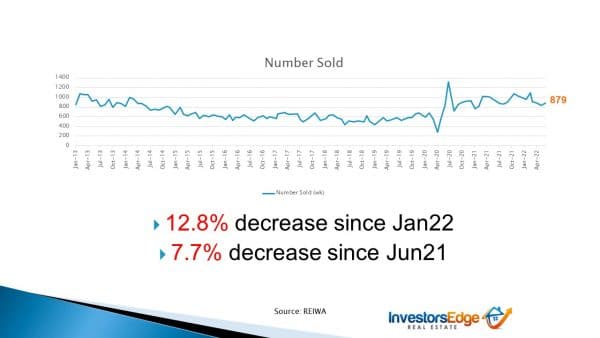
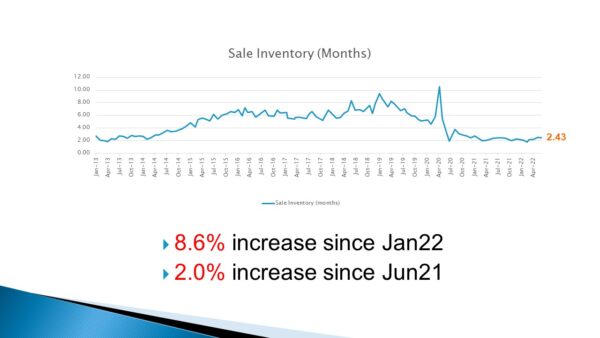
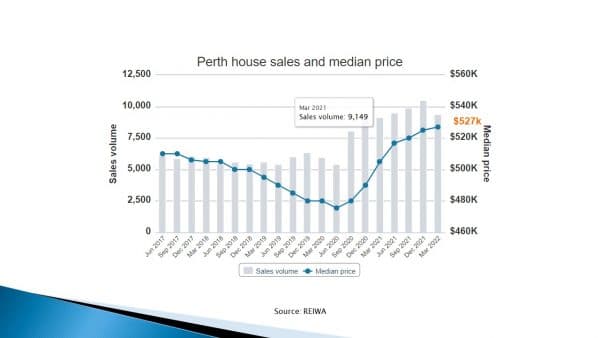
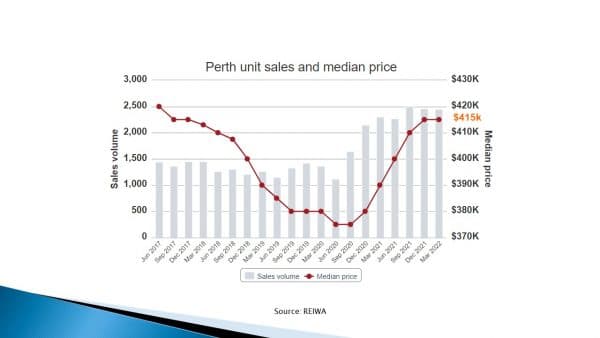


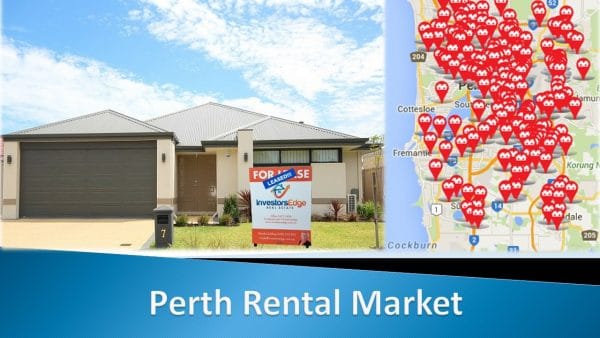 Number for Rent
Number for Rent


